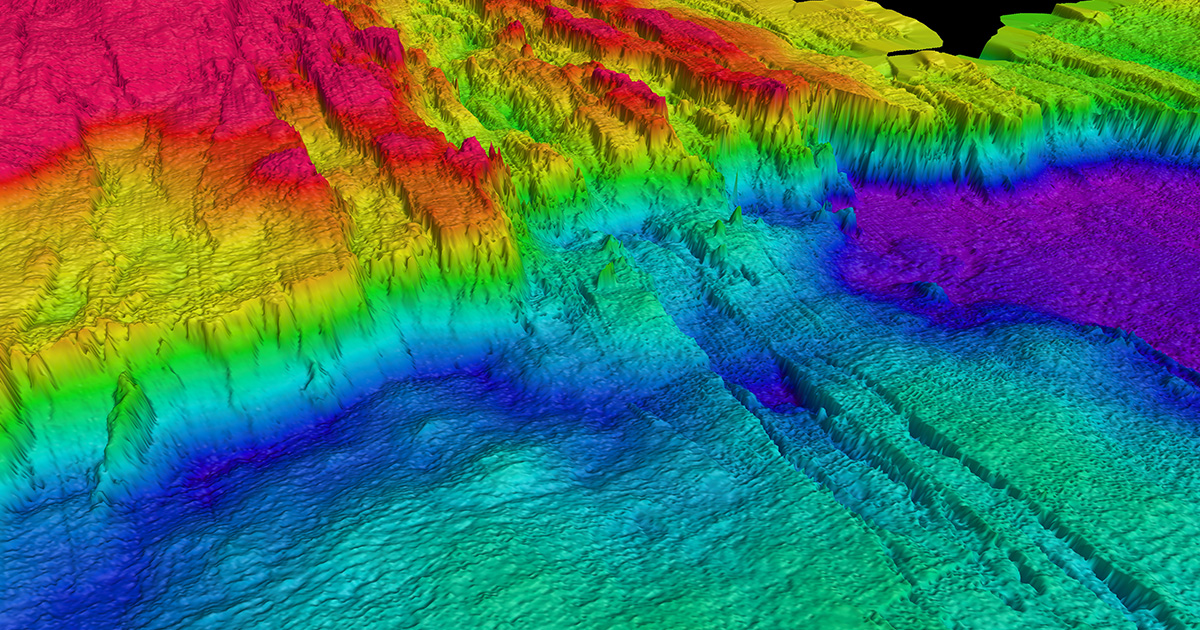An international research team aboard Schmidt Ocean Institute’s research vessel Falkor (too), have discovered a new high-temperature hydrothermal vent field that hosts several 10- to 15-meter-tall actively venting chimney clusters.
The vent field, named “Tortugas” by the science team and Ecuadorian observers, stretches more than 600 meters along the western edge of the caldera floor of the Los Huellos East submarine volcano.
Scientists detected the vent field in the Pacific Ocean, off the Western Galápagos Islands, utilizing state-of-the-art mapping technologies not often used in scientific exploration. The discovery marks the second hydrothermal vent field in the Ocean around the Galapagos Islands found by scientific teams on board the Schmidt Ocean Institute expedition this year.
During the expedition, led by Dr. John Jamieson of Memorial University of Newfoundland, Canada, researchers attached two high-resolution mapping technologies to an ROV; an M3 Sonar and Interferometric Synthetic Aperture Sonar (InSAS). The technologies were used in tandem to create highly detailed seafloor maps with up to 3-centimeter resolution. For comparison, the best shipboard sonar technologies create maps with 15- to 50-meter resolution in water depths of 1.5 to 3 kilometers.
The finely detailed maps allowed scientists to locate new hydrothermal vents surrounding the Galápagos, characterize the chemicals they emit, and the animals that live on them. Fifteen species not previously known to live in the region were located by the science team, including a “living fossil” mollusk known as a monoplacophoran. They also examined a Pacific White Skate nursery which exists on low-temperature hydrothermal vents. The Galápagos Pacific White Skate nursery is one of two confirmed Pacific White Skate nurseries in the world, the other is located in Canada.
The science team used the technologies to also revisit the world’s first discovered hydrothermal vent field, known as Rose Garden, which was found in 1977. A 2002 expedition to the site onboard Woods Hole Oceanographic Institution’s R/V Atlantis determined that Rose Garden is no longer active, after it was paved over by lava from a volcanic eruption. A subsequent expedition with the E/V Nautilus in 2015 visited the site and discovered evidence of low-temperature venting, but did not locate the source. With the help of newly acquired detailed maps and acoustic images of this site, the team were able to produce the first full picture of this historic vent field and identify specific features associated with the hydrothermal evolution of this site since its discovery.
“We returned to the site where hydrothermal venting was first discovered with technology that the original explorers never dreamed of,” said Jamieson. “This technology is revolutionizing our ability to explore and characterize these sites in a manner not imaginable in the late 1970s. It is the ocean equivalent of returning to the moon after fifty years but with the latest 21st century technology.”
The use of high-resolution maps and images not only helped identify venting sites that were previously known to be active and had not been explored before, but also led to new discoveries in sites that had been previously studied. The maps and samples from the expedition will aid scientists in creating a more complete picture on the lifecycle of hydrothermal vent ecosystems.
Inactive hydrothermal vents are a potential target for seafloor mining and the data collected from the expedition will aid scientists in understanding the role inactive vents play for the planet and the animal communities that live on them. Ecuador has called for a precautionary pause on deep-sea mining.
“These finely detailed maps created with state-of-the-art technology are exceptional for the area they cover and the seafloor complexity they reveal,” said Schmidt Ocean Institute’s executive director, Dr. Jyotika Virmani. “In addition to increasing the scientific knowledge of the region, it is wonderful to know they will be used in Ecuador's management of their own marine resources. Schmidt Ocean Institute is committed to stewarding new technologies that allow us to fully map and characterize the seafloor.”
The 30-day expedition began on October 24, 2023 in collaboration with the Galápagos National Park Directorate (GNPD), Charles Darwin Foundation, and the Ecuadorian Navy’s Oceanographic and Antarctic Institute (INOCAR). Other participating institutions included Memorial University of Newfoundland, University of Victoria, Dalhousie
University, University of Ottawa, The Japan Agency for Marine-Earth Science and Technology, The United States Geological Survey, University of Quebec at Romouski, Kraken Robotics, and Fisheries and Oceans Canada.



